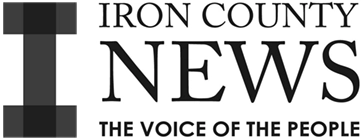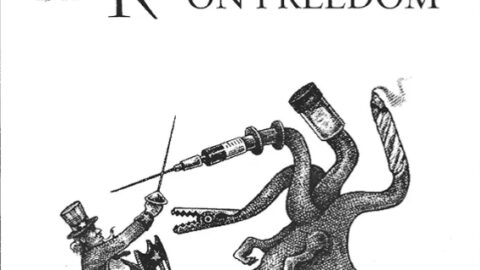“Meredith Wilson and Lacey Franklin’s story, The Music Man, we find a con-artist by the name of Harold Hill, coming into a small town in Iowa, trying to create a problem where a problem doesn’t actually exist. The intent of setting up the problem was so that Harold Hill could sell them a solution. He convinces the townsfolk that the local billiard parlor would lead to their children becoming disobedient, wasting time, and increasing deviancy. His solution was to have the community form a youth marching band, keeping the youth involved and away from the billiard parlor, but also wherein Harold Hill could sell band instruments and uniforms.” (1)
PART 1
The concept of creating a problem to sell a solution is indeed seen in various aspects of society. Let’s look at how this “problem-solution” setup can apply to each of these sectors:
Politicians: Politicians may sometimes amplify or create perceived problems to gain public support or push specific agendas. By emphasizing certain issues, they can position themselves as having the solutions, often using fear or urgency to rally support. This approach can be used to justify policies, increase funding, or even restrict freedoms in the name of security or social well-being.
Military-Industrial Complex: This refers to the close relationship between the government and the defense industry, which benefits from military spending. By presenting national security threats—whether real or exaggerated—there’s a continuous demand for new weapons, technology, and contracts. This incentivizes defense contractors to perpetuate or exaggerate conflicts to justify high defense budgets, often without enough focus on diplomacy or de-escalation.
Public Education: In education, problems are sometimes highlighted to justify policies or programs that may benefit certain companies or political agendas. For example, by framing certain standardized test scores as indicative of failing schools, this can justify funding private educational companies or introduce new curricula, testing systems, or “fixes” that may benefit private contractors more than students.
Pharmaceutical Companies: Pharma companies may overemphasize or even pathologize certain health conditions to create a market for their drugs. By positioning lifestyle or natural variations in health as problems, they can market medications as essential solutions. This can lead to over-medication or reliance on drugs for conditions that may be managed by lifestyle changes, further increasing their profits while creating a culture of dependency.
Hollywood: The entertainment industry often influences public perception by amplifying certain fears or ideals. Hollywood films and TV shows frequently depict exaggerated or sensationalized threats—like crime, terrorism, or alien invasions—that can stoke public fear or reinforce stereotypes. This has social and economic impacts, driving audiences to crave more “safety” in real life or supporting industries, like private security, that address these fears. It also shapes public opinion on issues, nudging viewers to align with certain political or social views that frame these “problems.”
Fake News: Fake news, or misinformation, is often crafted to spark outrage, fear, or bias around specific issues. By portraying certain events, people, or trends in misleading or inflammatory ways, fake news can shape public attitudes or create the impression of a widespread crisis. For example, it can heighten fears about immigration, health threats, or economic instability. Once this perception is established, certain groups, companies, or politicians can position themselves as providing the “truth” or “solution,” whether through political action, support for specific causes, or products that supposedly protect individuals from these issues.
Police: Sometimes, police departments or political entities may highlight crime rates or threats in ways that justify increased policing, budgets, or militarization. Even if crime is stable or decreasing, focusing on specific incidents can make the public feel that crime is more prevalent than it actually is. This perception can lead communities to support higher funding for police, surveillance technologies, or stricter laws, reinforcing the “need” for these solutions. In some cases, this can create a cycle where communities feel increasingly dependent on law enforcement, even in situations where community-based interventions might be more effective.
Medical Industry: The medical and pharmaceutical industries may sometimes inflate or create perceptions around certain health risks, promoting the idea that these risks require immediate medical intervention. By broadening definitions of certain disorders or creating terms for newly identified syndromes, they can widen the market for drugs, treatments, and medical devices. For instance, pharmaceutical companies have been known to promote conditions like “mild depression” or “low energy” to expand the market for antidepressants and stimulants. This approach can lead to over-medication or unnecessary treatments, often prioritizing profits over patient well-being.
Surveillance: In the realm of surveillance, both private companies and government entities sometimes emphasize the threat of crime, terrorism, or cyber threats to justify expanded monitoring systems. By highlighting certain security incidents or promoting a heightened sense of vulnerability, these groups can secure public buy-in for surveillance technologies. This includes widespread CCTV networks, data monitoring, or even personal devices like home security systems and smart cameras. The “solution” here is typically justified as “keeping people safe,” though it can also lead to privacy concerns, increased government power, and extensive data collection on citizens without clear benefits.
Government (Agencies and Branches): Government agencies, such as the FBI, NSA, or Department of Homeland Security, may sometimes emphasize risks like terrorism, cyber threats, or foreign influence to justify increased budgets, greater power, or legislative changes that expand their reach. These threats can be portrayed in ways that create a sense of urgency or existential danger, leading the public to support restrictive laws or increased surveillance in the name of safety. For example, following high-profile threats, government agencies often push for measures like increased airport security, expanded data collection, or more militarized policing under the premise of national security, even if these measures might not effectively address the actual problem.
Each of these examples aligns with Harold Hill’s tactics in The Music Man: creating or exaggerating a “problem” to offer a profitable “solution.” In every case, the real motivations often prioritize economic gain or influence, not necessarily the public’s best interest.
PART 2
The long-term impact of a society that constantly buys into manufactured or exaggerated problems can be profound. When sectors create or emphasize problems to sell solutions, several consequences arise, particularly affecting the public good:
Erosion of Trust: Over time, the public becomes skeptical and distrustful of institutions, companies, and even government entities. When people repeatedly experience exaggerated threats or solutions that don’t yield positive results, it can lead to a general lack of trust. This erodes social cohesion, makes it harder for truly beneficial initiatives to gain support, and can foster a sense of cynicism about both leaders and solutions offered by institutions.
Resource Misallocation: Resources—whether time, money, or public attention—are diverted from real, pressing issues to address these created or overstated problems. For example, funds that could go to public health, education, or infrastructure may be spent on solutions that ultimately benefit private entities more than the public. This misallocation leaves less support for initiatives that could bring genuine improvement to society, creating cycles of ineffective spending.
Increased Public Dependency: When people are constantly told that solutions require professional intervention, drugs, or technologies, there’s a shift away from personal agency and community-based solutions. This can foster a reliance on corporations or government entities, creating a culture where individuals and communities feel helpless without external interventions—even in situations they could manage themselves.
Normalization of Surveillance and Control: As surveillance and regulation become accepted as part of addressing so-called threats, privacy and individual freedoms may gradually erode. The public becomes accustomed to extensive data collection, increased monitoring, and restrictions in the name of security, which can lead to reduced freedom, autonomy, and privacy over time. Once these practices are normalized, rolling them back becomes increasingly difficult.
Heightened Anxiety and Fear: Constant emphasis on problems, whether in health, security, or lifestyle, creates a culture of fear and anxiety. People become more worried about potential threats and risks, even in areas where risks are statistically low. This can increase stress, mental health issues, and an overall sense of insecurity, all of which negatively impact the quality of life.
Stifled Innovation and Progress: When solutions are focused more on short-term profit than genuine problem-solving, innovation can suffer. Companies or agencies may lack motivation to find real, sustainable solutions if they’re profiting from a continual cycle of problem-solution. This can stall progress and leave society dealing with recurring issues rather than moving forward with meaningful, lasting solutions.
Weaker Social Bonds and Community Solutions: As society buys into externally marketed “solutions,” there’s often less focus on local, community-driven approaches. Individuals may overlook the power of community organizing, peer support, and grassroots action in favor of paid or institutional solutions. This erodes social bonds and reduces the sense of community resilience, which historically has been essential in times of crisis.
The cumulative impact of these effects can result in a society that’s less resilient, more fragmented, and more susceptible to manipulation. By creating a cycle where problems are consistently exaggerated or fabricated, the public becomes vulnerable to solutions that don’t genuinely serve its long-term interests, often benefiting a select few at the expense of collective well-being.
PART 3
Resource misallocation can set up a cycle that deepens social and economic inequality. When resources are consistently funneled towards manufactured issues or benefit a small elite, it can lead to a form of debt bondage and wealth concentration that sustains an oligarchy. Here’s how this dynamic works and compounds over time:
Debt Bondage for the Public: When resources are misallocated towards solutions that mainly benefit corporations or powerful interests, it often leads to increasing debt—especially for individuals and public institutions. For instance, rising healthcare costs, student loans, or escalating costs of living force people to take on more debt. This creates a cycle where people become financially trapped, working just to keep up with debt payments rather than building wealth or securing financial independence.
The Wealth Gap and “Rich Get Richer” Cycle: Misallocation funnels public funds into sectors that yield high returns for those at the top (like defense contracting, pharmaceutical profits, or corporate tax breaks) while providing minimal real benefits to the broader population. The wealthy, who often control these industries, are thus able to amass more wealth through dividends, investments, and corporate growth. Meanwhile, as public funds are diverted, there’s less investment in social programs, affordable housing, or public infrastructure that could benefit everyone.
Control of Key Resources and Industries: When a few elites or corporations gain control over essential resources—like housing, healthcare, or even media—they can set terms that benefit themselves. This means charging high rents, prioritizing costly treatments, or controlling the narrative on certain issues, all of which keep wealth within a small circle. The average person is left with fewer choices and more financial burdens, reinforcing wealth inequality.
Increased Influence and Oligarchic Control: With accumulated wealth comes political influence, enabling the wealthy to shape policies, fund political campaigns, or lobby for regulations that maintain their dominance. This creates a feedback loop where policy and governance increasingly serve the interests of the elite over the public. As a result, government actions are shaped less by public welfare and more by corporate and oligarchic interests, sidelining the needs of the average citizen.
Erosion of Social Mobility and Opportunity: As wealth concentrates, it becomes harder for those at lower socioeconomic levels to climb the economic ladder. Resources that would traditionally support social mobility—like education funding, job training, or affordable housing—are deprioritized or even privatized, putting these opportunities out of reach for many. This turns society into a pyramid, where those at the top maintain their position, while those at the bottom face barriers to economic advancement.
Entrenchment of an Oligarchic Structure: Over time, this economic system solidifies, creating a quasi-oligarchy where a small number of elites hold the majority of wealth and influence. They control major industries, shape policy, and even set cultural or social trends, creating an apex power structure that resists change. The public finds it increasingly difficult to advocate for their needs or hold these powers accountable, deepening inequality and social frustration.
In this setup, the “problem-solution” cycle is perpetuated, keeping the public reliant on expensive solutions while benefits disproportionately accrue to a wealthy few. This leads to a situation where inequality, debt, and influence concentration are sustained and expanded, making it harder for the majority to break free from economic insecurity. As such, the public good suffers, democracy and the republic weakens, and social mobility becomes the exception rather than the norm.
- There Are Two Types of Power: Concentrated (Centralized) & Separated
- There Are Really Only Two Types of Government: Republic & Oligarchy
- World War 3 Isn’t What You Think; It is the Globalists vs the Rest of Us
(1) I Am a Child of God: Healthy-Esteem: A Matter of Belief






